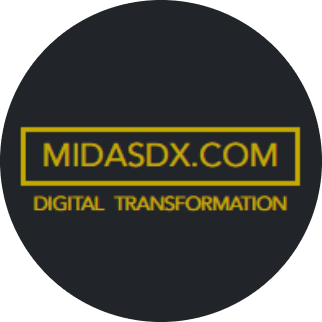
History of Industry 4.0

1st Industrial Revolution (Mechanisation)
The concept of the "industrial revolution" originated during the mid-18th century, when the introduction of mechanical production facilities powered by water and steam brought about a shift from an agricultural society to an industrial one. This mechanisation of agriculture and the implementation of steam engine-driven production resulted in heightened productivity, although manufacturing continued to heavily rely on human labour. Commencing in 1760, the First Industrial Revolution marked a significant change from manual production and reliance on animals to the utilization of machinery powered by steam and water. The initial industries to embrace this revolution included textile manufacturing, iron production, agriculture, and mining.
2nd Industrial Revolution (Electrification)
A century later, we saw a shift from water and steam power to electricity as the dominant source of energy. This breakthrough enabled businesses to centralise power supplies for individual machines, marking the onset of the second industrial revolution. This period was characterised by increased mechanisation, the widespread adoption of electricity, and the emergence of mass production. These technological advancements paved the way for the development of modern production lines in factories, enabling mass production and introducing some level of automation into the manufacturing process, which led to a significant reduction in human labour intensity as the primary focus shifted towards accelerating production and reducing costs.
3rd Industrial Revolution (Automation and Computerization)
Later, in the late 20th century, the Digital Revolution took off. The invention and manufacturing of electronic devices, such as transistors and integrated circuit chips, brought about significant advancements in automation, computers, advanced telecommunications, and data analysis. These electronic technologies enabled machines to be fully or partially automated, supplementing or replacing human operators. The continuous development of electronics and information technology led to the adoption of industrial robotics and the miniaturisation of circuit boards through programmable logic controllers (PLCs) in machines. As a result, production processes became increasingly automated and streamlined, marking the onset of the third industrial revolution. Concurrently, software systems emerged to harness the potential of electronic hardware. Traditional integrated systems, like material requirements planning, were replaced by enterprise resources and planning tools that empowered humans to effectively manage and monitor product flows in factories.
4th Industrial Revolution (Interconnected Technologies)
The term "Fourth Industrial Revolution" signifies the latest phase of industrial advancement following the 18th-century Industrial Revolution. It is characterised by the merging of technologies that increasingly blur the boundaries between the physical, digital, and biological realms. This convergence is driven by a remarkable combination of emerging breakthroughs in robotics, artificial intelligence, nanotechnology, quantum computing, biotechnology, materials science, energy storage, the Internet of Things (IoT), the Industrial Internet of Things (IIoT), decentralised decision-making, 5G wireless technologies, additive manufacturing, 3D printing, and autonomous vehicles. As a result, companies across various industries, such as retail, transportation, and banking, are actively incorporating technologies like augmented reality, 3D printing, and artificial intelligence into their operations. The Fourth Industrial Revolution's impact extends widely and influences various aspects of human life, including the economy, businesses, governments, societies, and individuals. The phrase “Fourth Industrial Revolution” was first introduced by Klaus Schwab (Executive Chairman of the World Economic Forum) in 2015. The term "Industrie 4.0" was introduced by the German government in 2011 as a description of a digitization project in manufacturing. It quickly evolved into a set of recommendations for implementing technology and catalysing large-scale digital transformation.
Get in Touch
Ready to seize Industry 4.0's potential? Reach out to MidasDX today to embark on a transformative journey. Our experts are here to guide you towards excellence in SIRI assessments, training, and solutions. Let's shape your digital success together!
Contact
Location
Portsmouth